 Radio Coverage
Radio Coverage Frequency bands (2G, 3G, 4G) used by operators, during the Mobile Network Benchmarking activity, is presented in Figure 1.

Fig. 1. Frequency bands used by operators
2G/GSM: All three operators used the 900 MHz band. The 1800 MHz band was used by Telenor and Vip mobile.
3G/UMTS: All three operators used the 2100 MHz band. The 900 MHz band was used mainly by Telenor and, to a very small extent, by Telekom Srbija.
4G/LTE: All three operators used the 800 MHz and 1800 MHz bands. Telekom Srbija and Vip mobile used both bands evenly in all aggregations, while Telenor was using mainly 800 MHz outside of the Large Cities. In all aggregations for data tests, Telekom Srbija and Vip mobile were mainly using an LTE 20 MHz bandwidth, while Telenor was mainly using an LTE 10 MHz bandwidth.
Carrier Aggregation (CA) usage depends on the network configuration and the amount of data sent during the test. In Large Cities, Telenor had over 20% usage of LTE CA, Vip mobile had over 7% and Telekom Srbija around 4% usage of LTE CA. Usage of LTE CA in Small Cities was much lower than in the Large Cities whereby Telekom Srbija had none, Telenor only around 2%, whilst Vip mobile had over 6%. There were only a few samples on roads where LTE CA usage was detected.
Charts with mobile coverage statistics show the distribution of radio signal levels for 2G/GSM, 3G/UMTS and 4G/LTE technologies according to criteria defined by RATEL for the purpose of the Benchmarking campaign, are presented below in Figure 2:
| 2G/GSM signal level | 3G/UMTS signal level | 4G/LTE signal level | |
| Poor | L<-95dBm | L<-105dBm | L<-110dBm |
| Fair | -95dBm ≤ L < - 85dBm | -105dBm ≤ L < -95dBm | -110dBm ≤ L < -100dBm |
| Good | -85dBm ≤ L < -65dBm | -95dBm ≤ L < -65dBm | -100dBm ≤ L < -80dBm |
| Excellent | L ≥ -65dBm | L ≥ -65dBm | L ≥ -80dBm |
2G/GSM network coverage is presented in Figure 3
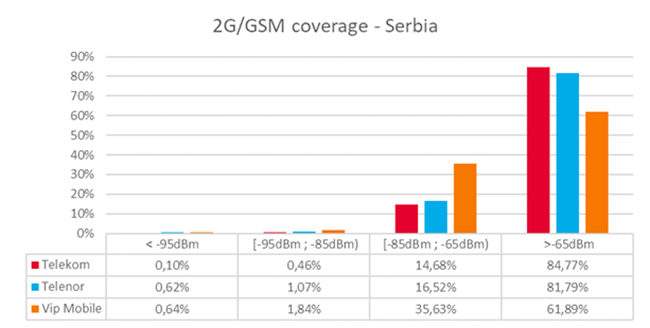
Fig. 3. 2G/GSM coverage
2G/GSM network coverage maps for all three mobile operators are shown in Figure 27.
Telekom Srbija
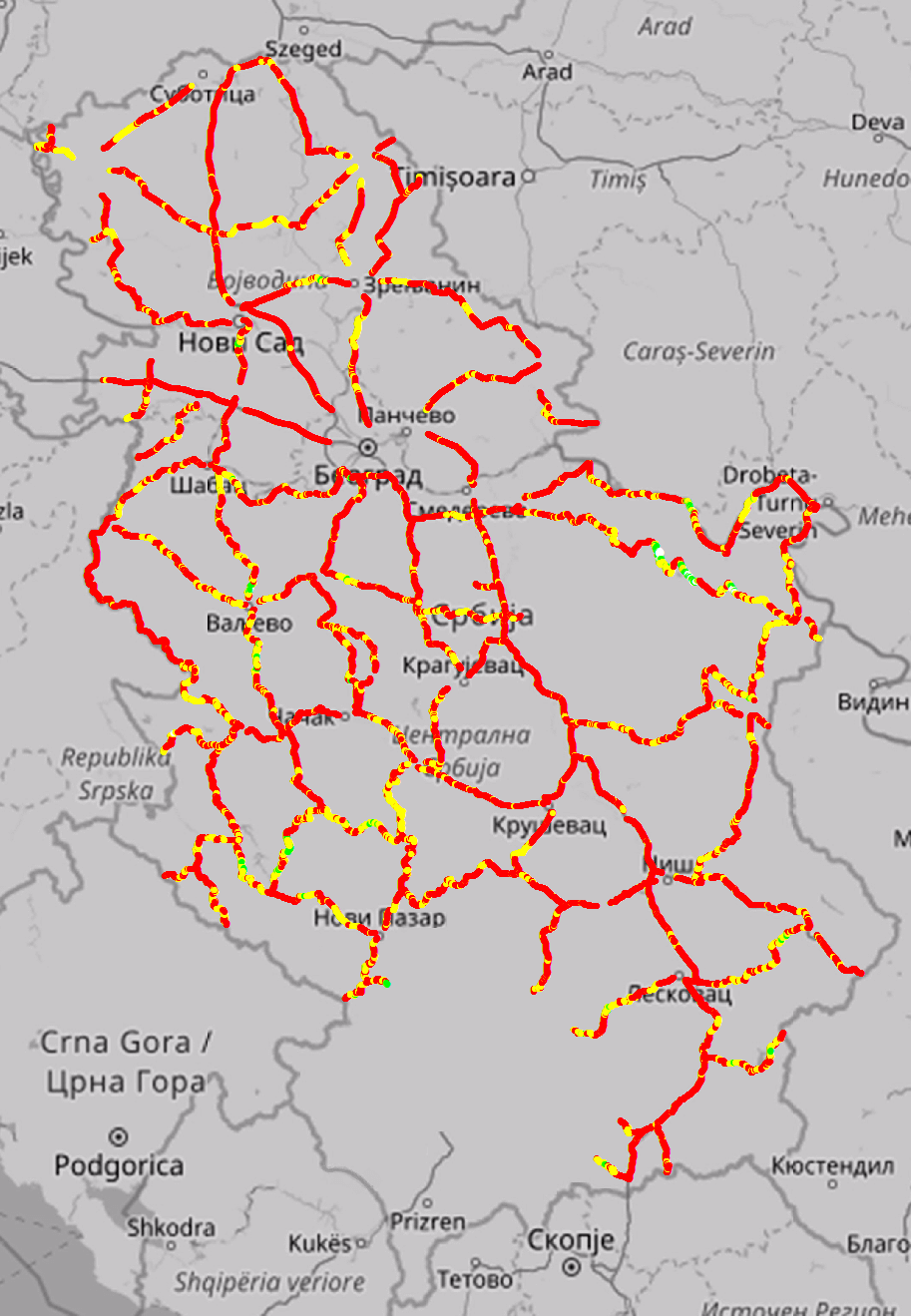
Telenor
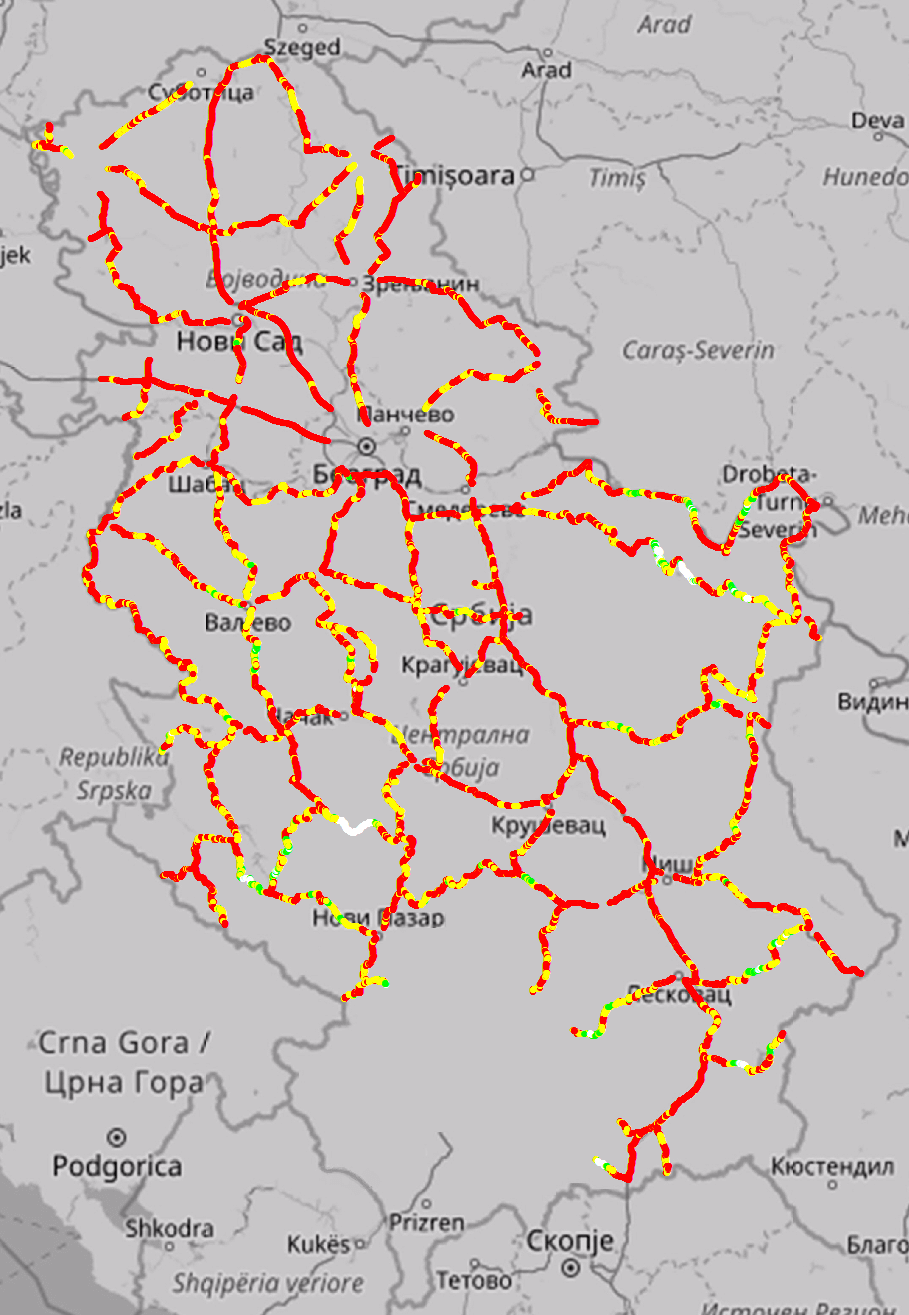
Vip mobile
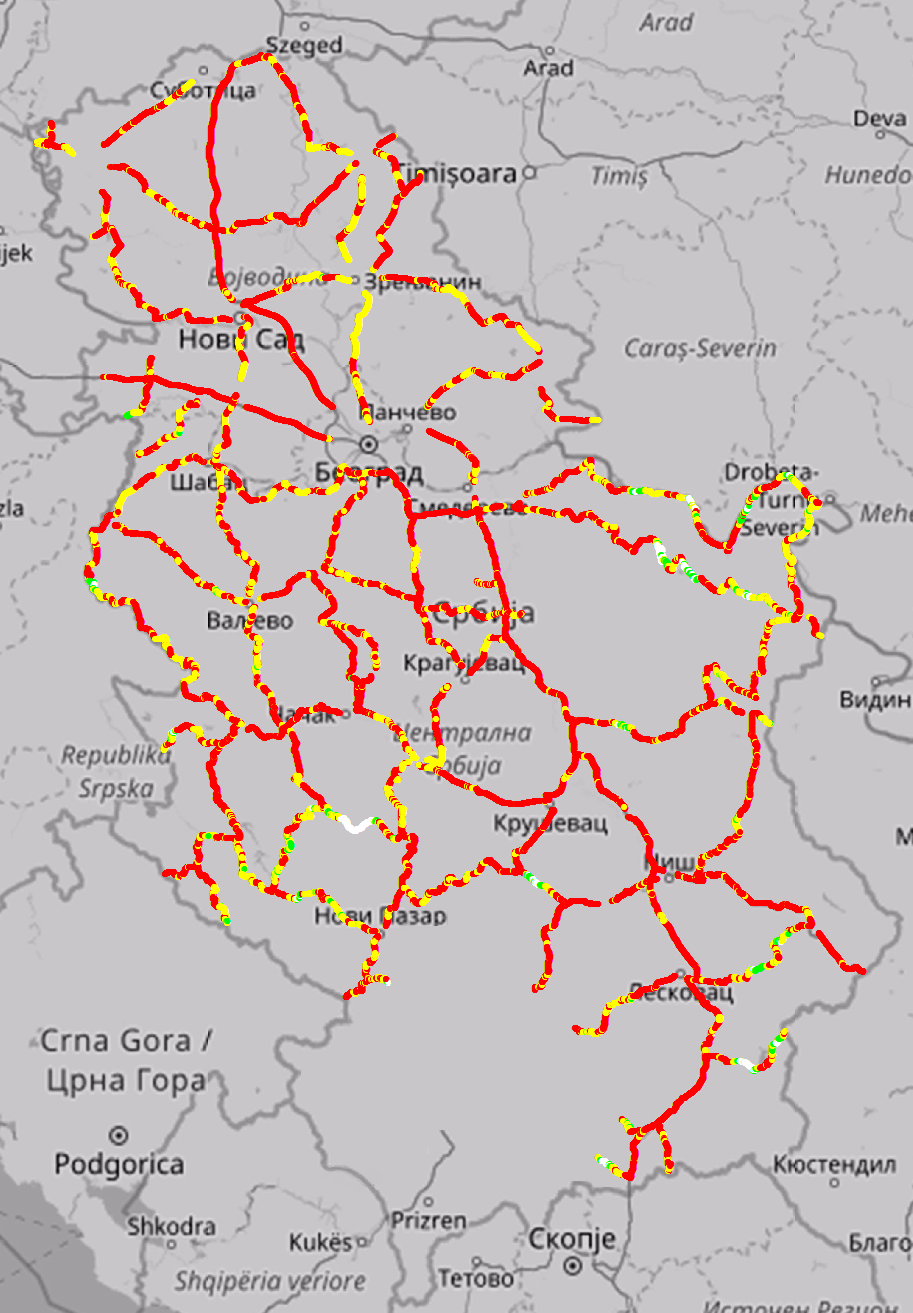
Fig. 4. 2G/GSM network coverage maps
The best coverage of 2G network was achieved by the Telekom Srbija network. Telenor and Vip mobile had slightly worse 2G coverage and lower signal quality, comparing to Telekom Srbija network.
3G/UMTS network coverage is presented in Figure 5.
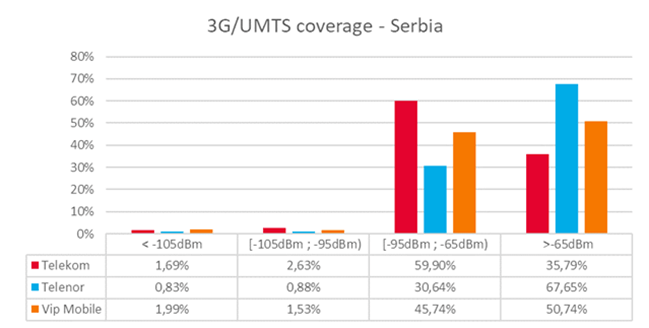
Fig. 5. 3G/UMTS coverage
3G/UMTS network coverage maps for all three mobile operators are shown in Figure 29.
Telekom Srbija

Telenor

Vip mobile
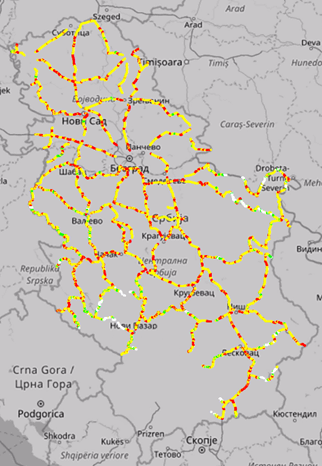
Fig.6. 3G/UMTS network coverage maps
The network with the best 3G coverage was Telenor due to the highest number of samples with good 3G radio signal levels. This result was caused by the widest UMTS 900 MHz footprint, with a well-developed UMTS 900 MHz coverage outside of cities.
4G/LTE network coverage is presented in Figure 7.
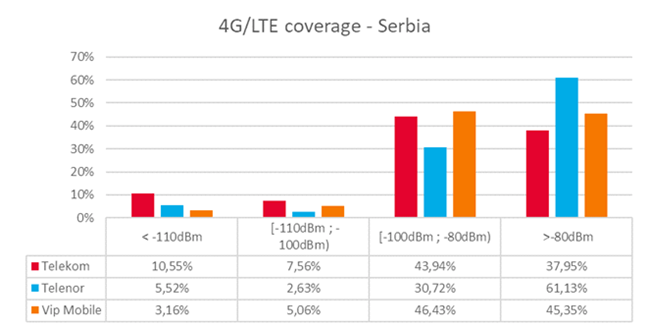
Fig. 7. 4G/LTE network coverage
4G/LTE network coverage maps for all three mobile operators are presented in Figure 8.
Telekom Srbija
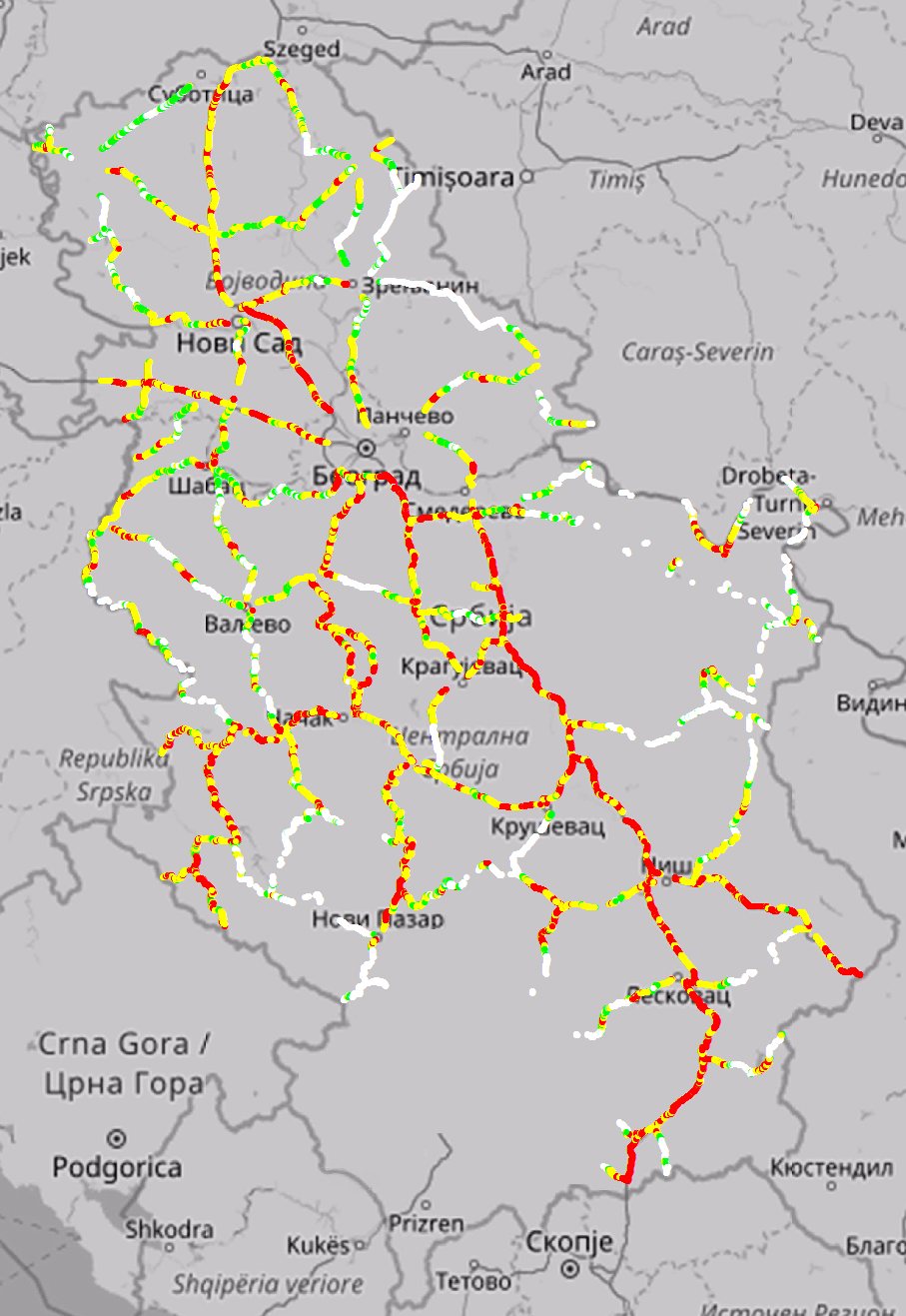
Telenor
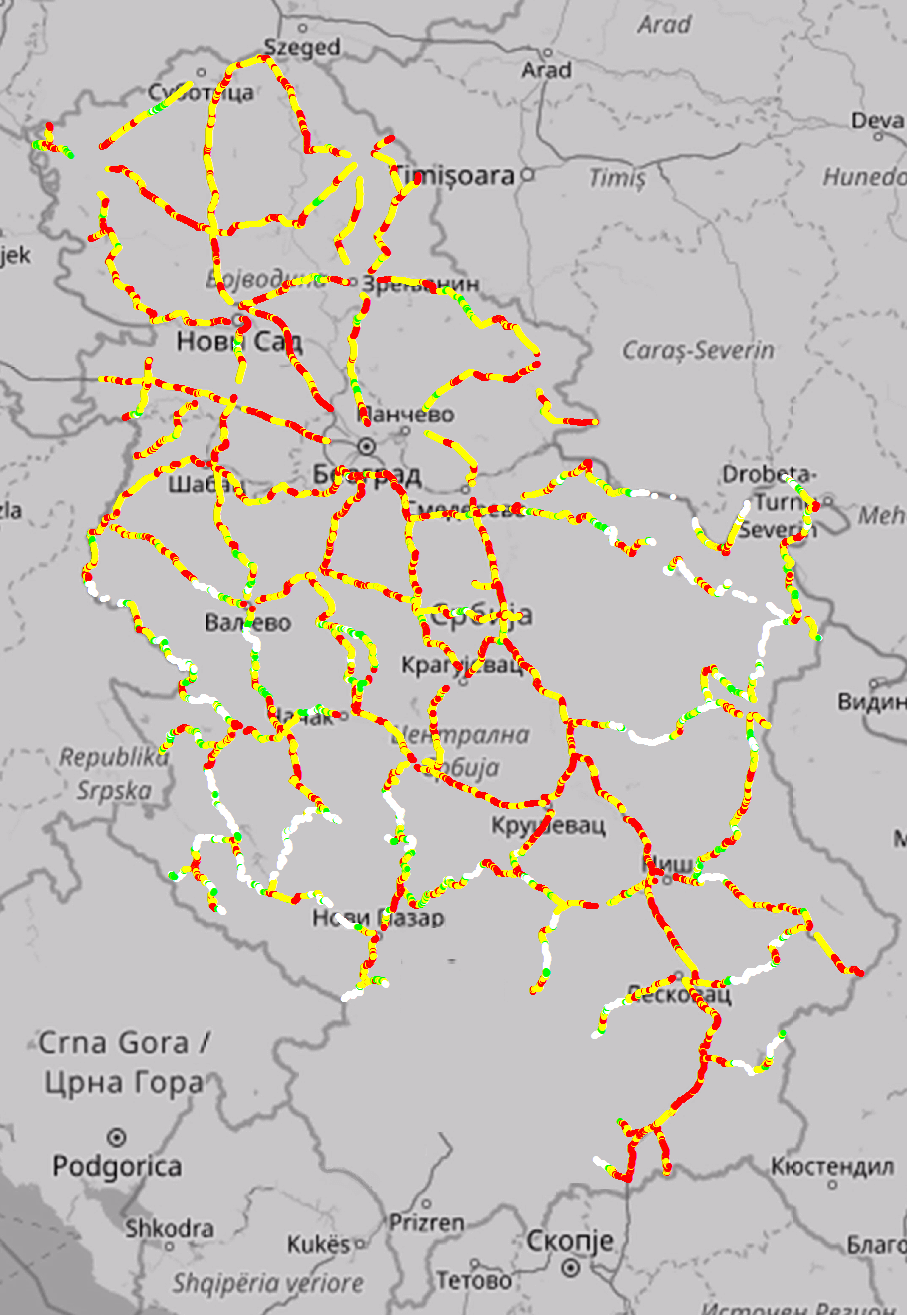
Vip mobile
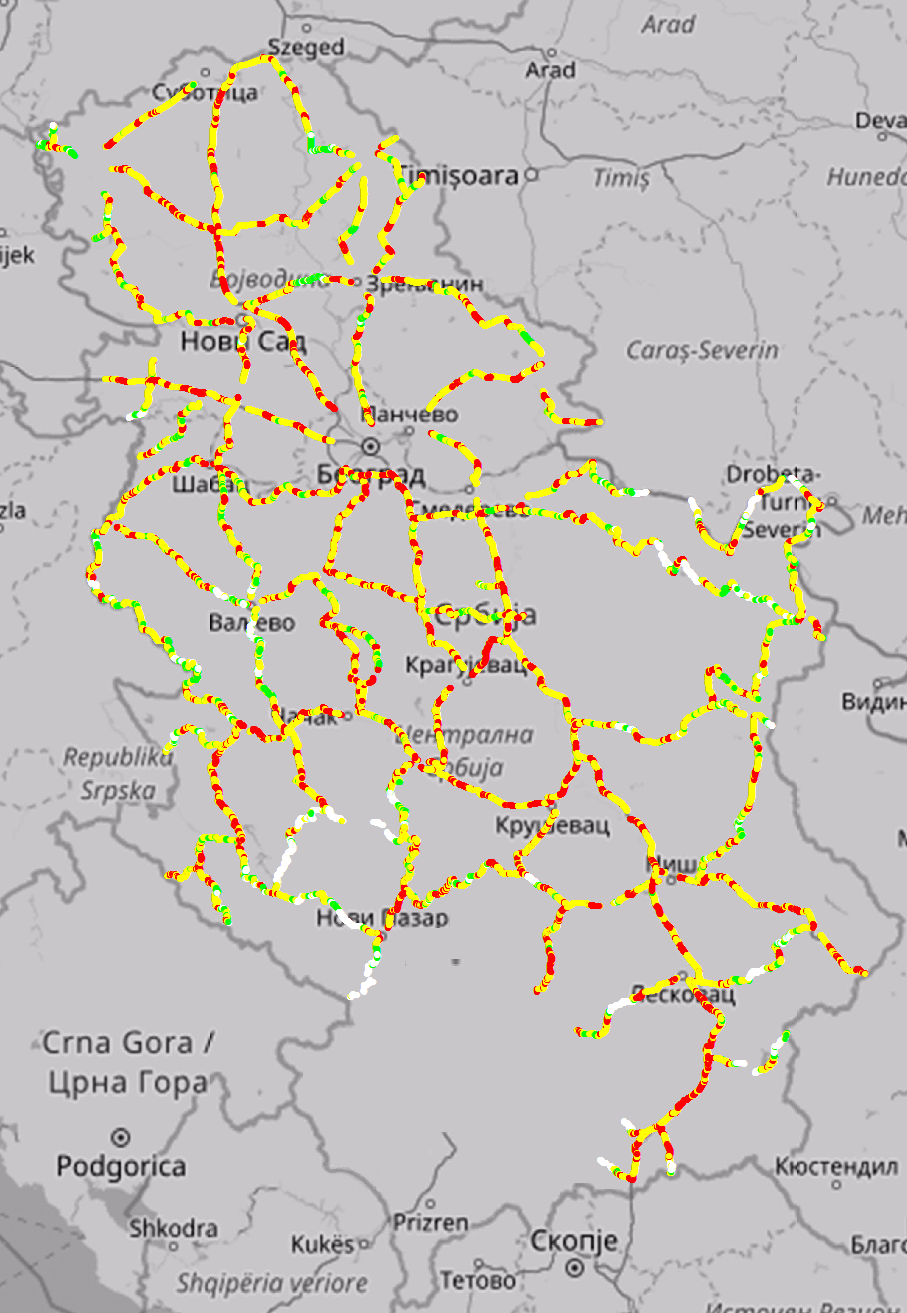
Fig. 8. 4G/LTE network coverage maps
The 4G coverage showed the different strategies operators adopted to deploy LTE coverage. Telenor offered the widest LTE 800 MHz deployment outside of cities. Vip mobile showed a slightly lower level of deployment for LTE 800 MHz band, while it was more advanced in deploying the LTE 1800 MHz band. Telekom Srbija focused on deploying LTE 800 MHz coverage across the main transfer roads.
When summarizing results for all bands, Vip mobile showed the smallest share of samples with poor 4G signal levels, while Telenor had the highest share of samples with good 4G signal levels. Telekom Srbija remained behind the competitors in both categories.